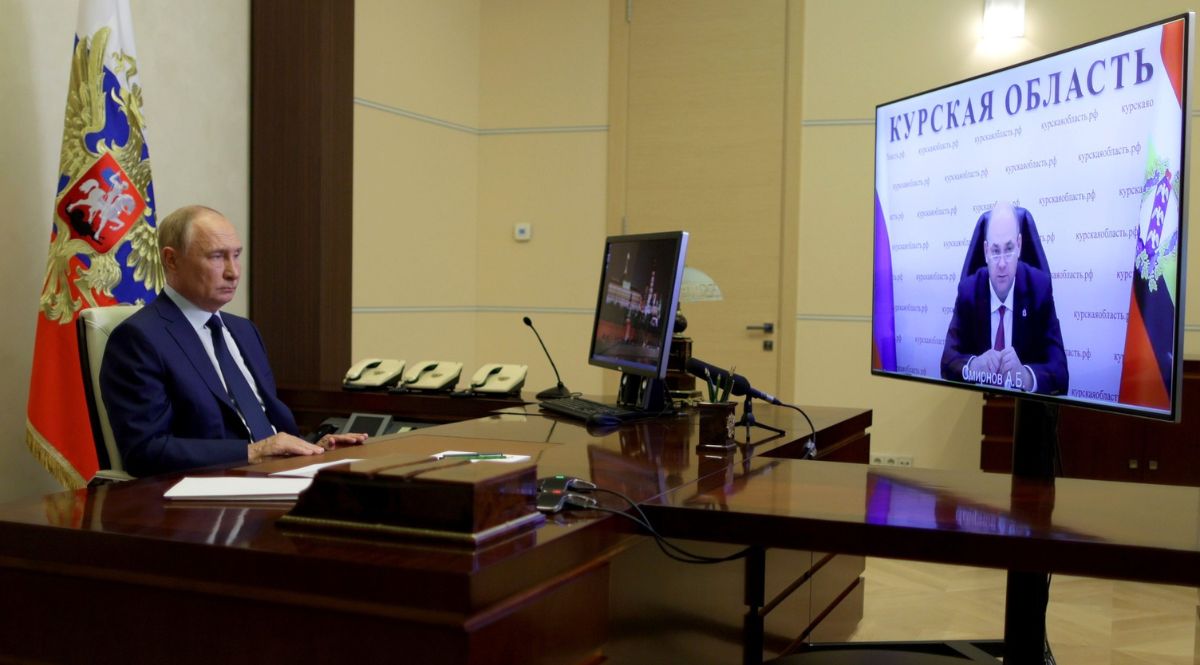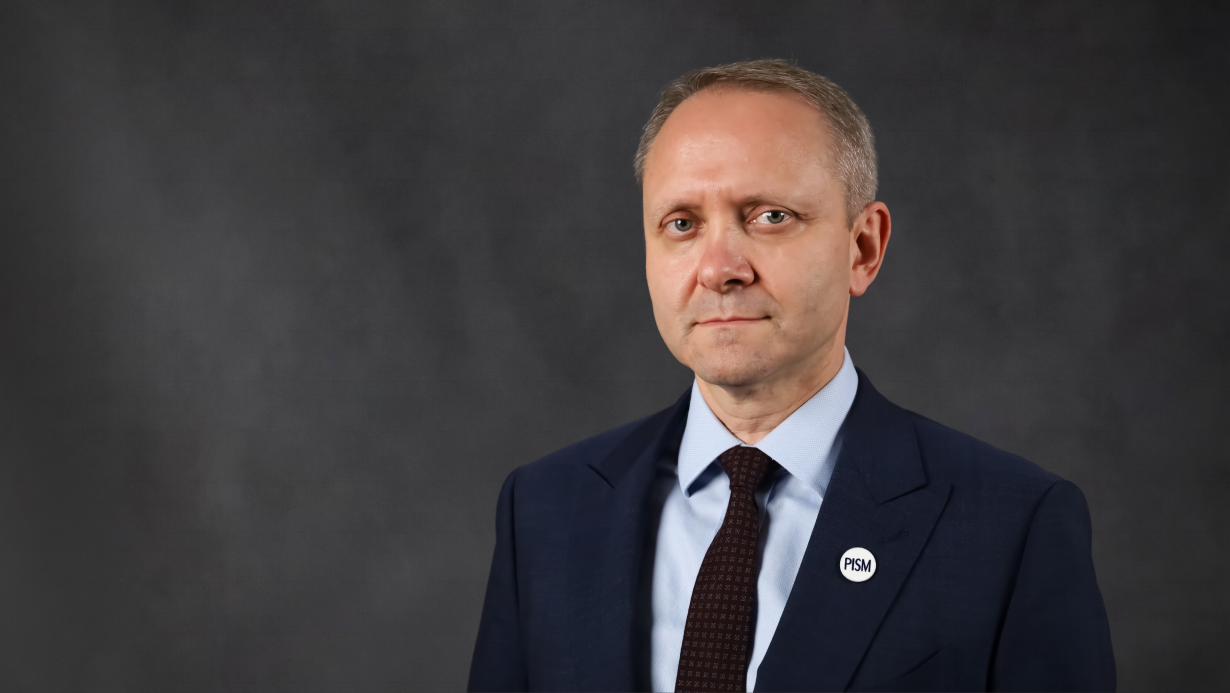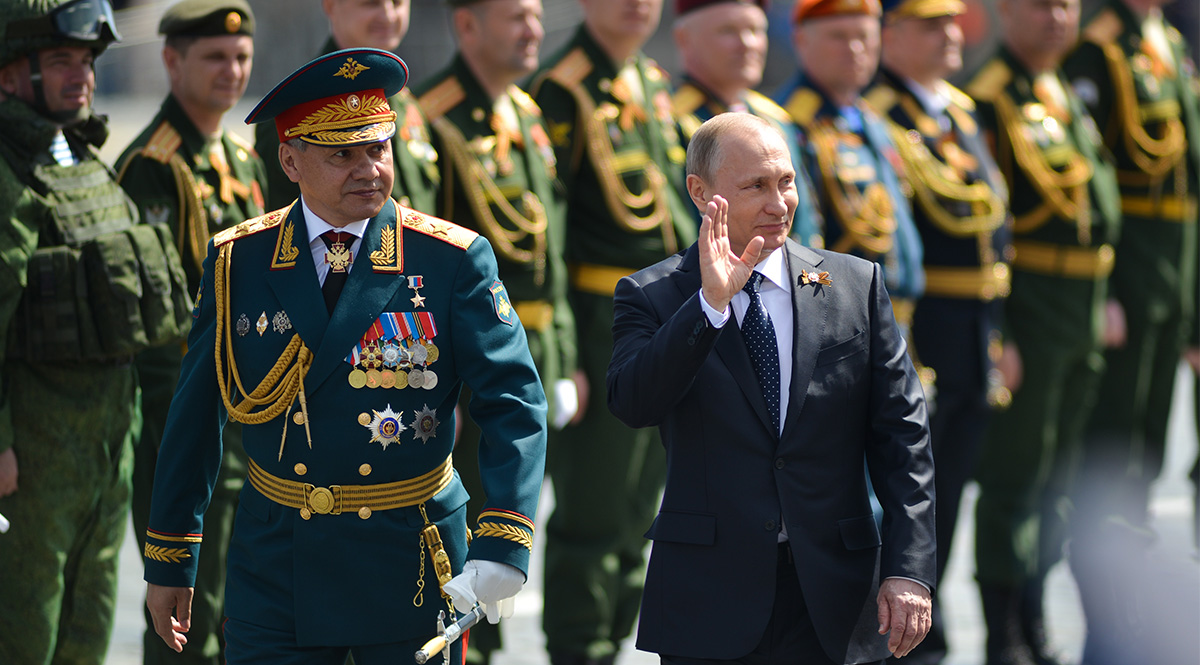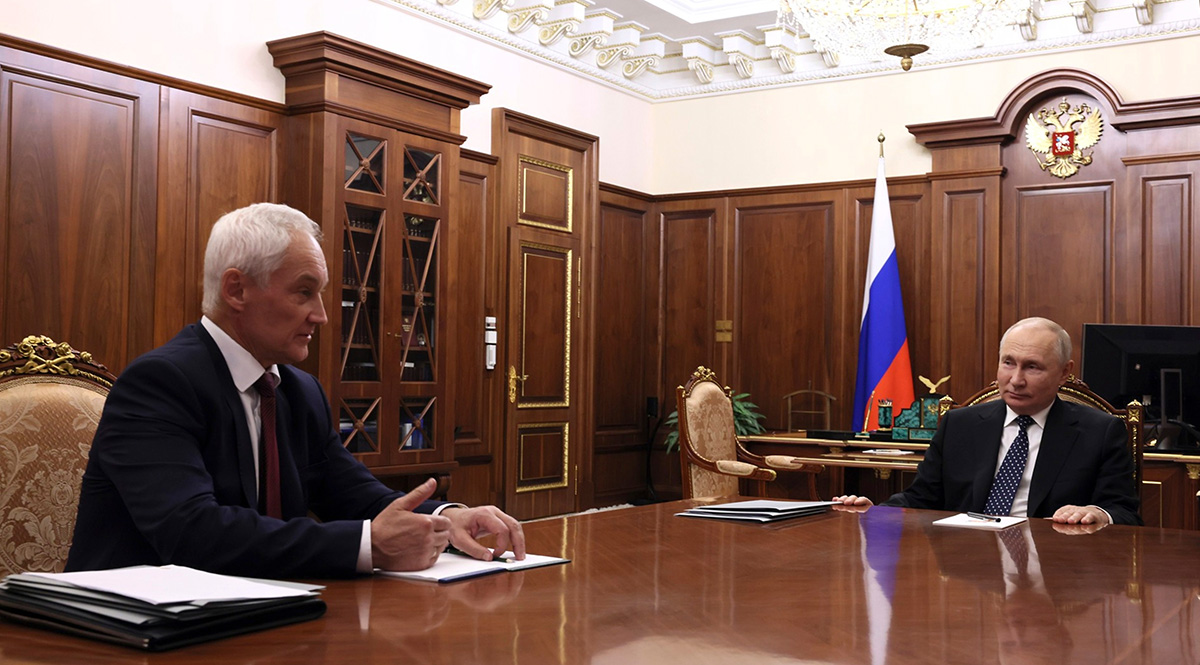Ukrainians Mount Offensive into Russian Territory
Since 6 August, Ukrainian troops have been conducting an offensive in the Kursk Oblast of Russia. The Russian authorities are clearly having problems controlling the situation. The attack is an attempt to break the deadlock on the front, a situation which has been unfavourable for the Ukrainians. Already at this stage of the offensive, Ukraine has won a significant image boost, which may have a positive impact on possible negotiations with Russia.
 Kremlin Pool / Russian Look / Forum
Kremlin Pool / Russian Look / Forum
At what stage is the new Ukrainian offensive?
Ukraine managed to surprise the Russians, who were poorly prepared to defend the border near Sumy Oblast. The attack has been carried out with relatively small forces, supported with the large-scale use of drones. After seven days of the offensive, Ukrainians had reached approximately 30 km inside Russia. The commander of the Ukrainian forces claims that his troops control approximately 1,000 km2 of Russian territory. Among its gains, the Ukrainian side probably holds the town of Suja, which has a Gazprom measuring station through which gas is sent to Slovakia and other EU countries. Dozens of Russian soldiers were also taken prisoner. The governor of the Kursk region declared a state of emergency and about 120,000 people were evacuated from the Kursk region with an additional 60,000 planned. Belgorod and Bryansk Oblasts are also preparing for Ukrainian attacks. Contrary to Russian propaganda about success in stopping the offensive, the Russian authorities are clearly having problems controlling the situation.
What could be the next steps for both sides?
The Ukrainian forces engaged in the offensive do not allow for a significant expansion of territorial gains. In the coming days they may still exploit Russia’s weaknesses to take control of other areas, but Ukraine will increasingly focus on strengthening the defences of the controlled territory. Although Russia is determined to push the Ukrainian forces back across the border, it may have trouble generating sufficient forces. For political reasons, Putin does not want to admit that the Russian aggression against Ukraine is a regular war that has now spread over to Russian territory. He describes Russia’s efforts to push the Ukrainians back as an anti-terrorist operation with the aim to retake the territory, with the FSB internal security service responsible for this task. The use of more appropriately trained troops on a larger scale may be a challenge as most of those forces are tied down in eastern Ukraine. The possible involvement of land forces would make it difficult for Russia to continue its offensive in Donbas and would provide Ukraine with an opportunity to break through the frontline and re-take the initiative.
The outbreak of a fire at the Russian-controlled Zaporizhzhia nuclear power plant indicates that Russia may be trying to blackmail Ukraine with the threat of a nuclear incident. It will probably try to intensify attacks using missiles and drones against civilian targets on Ukrainian territory. It will also use the Ukrainian offensive for propaganda purposes, presenting itself as a victim of aggression. Despite Russia’s problems in the Kursk region, it is concentrating its forces and a counteroffensive, with the support of the air forces and artillery, can be expected in the coming days. This could, however, lead to serious destruction of Russian civilian infrastructure. If maintaining control of the territory it has won is costing Ukraine too much, its command may decide to withdraw the troops to preserve the political and propaganda gains that have already been achieved through the attack.
What could be the political and strategic consequences of the Ukrainian attack?
The main effect may be a strengthening of Ukraine’s position before possible negotiations with Russia, which may take place after the November presidential elections in the United States. If Ukraine maintains or expands control over the occupied territories, it could use them as a bargaining chip, demanding the withdrawal of Russian troops from part or all of the occupied Ukrainian territories. Even if Ukraine decides to withdraw its troops, the offensive could significantly benefit it. The incursion of Ukrainian troops into Russia has shocked Russian society. Despite Russian propaganda, the attack weakens Putin politically, as it sends a signal that he is unable to guarantee the security of Russian citizens inside Russia. The offensive may weaken the voices that have been growing in the West for several months that the war has reached a stalemate, Russia cannot be defeated, and Ukraine must acknowledge the new realities. The arguments of opponents of attacking Russia on a larger scale on its territory—they point to the significant risk of escalation and the threat of Russia using nuclear weapons—will also be weakened. The credible threat that Ukraine may expand the attacks deeper into Russia to paralyse its military may become an element of pressure on Putin to force him to negotiate. With respect to the U.S. presidential elections, if Donald Trump wins, it may be more difficult for him to pursue negotiations with Russia at the expense of Ukraine’s long-term security. If Kamala Harris wins, a Democratic administration will be under increased pressure to allow Ukraine to use American weapons to attack military targets inside Russia. The successful offensive could also strengthen Ukrainian morale, which has been undermined by the failed attempt to break through the Russian defence lines in Ukraine last summer. Russia is likely to use the offensive for propaganda purposes to present Ukraine as a threat to its security, and therefore, Ukraine’s partners, as well as NATO and the EU, should emphasise in their strategic communication that Ukrainian troops are acting in self-defence in accordance with international law.





